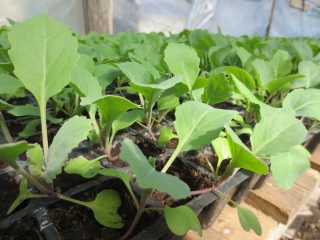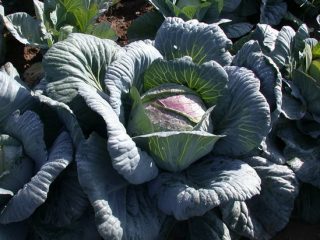Content
Chinese cabbage has gained great popularity all over the world. It first appeared in China 5 thousand years ago. It is not known whether she is from Beijing or not, but in our area she is called that way. In other countries, its name is translated as “Chinese salad.” Indeed, the leaves of this cabbage are very similar to lettuce.
Chinese cabbage has long, light green leaves gathered into a loose, oblong head. It is used in cooking in different ways. It is great for fresh salads, stews and first courses. It is worth recognizing that it is found much more often on tables than in vegetable gardens. Some are not used to growing such vegetables on their plots. Now we will compare the best varieties of Chinese cabbage and prove that growing it is not at all difficult.
General information
Not every gardener who has once planted Chinese cabbage in his garden will say that it is an unpretentious vegetable. It is not as easy to grow it in open ground as regular white cabbage. It may never form a head of cabbage, but will simply begin to bloom. The reason for this may be the low soil temperature after planting in open ground. If you plant seedlings in soil that has warmed up to +15 °C, then there should not be such problems.
Of course, the soil does not warm up quickly in every region. In that case it's better plant cabbage under cover. In the future, you will also have to monitor the temperature. Too high a temperature, as well as a low one, can lead to the onset of flowering.
There are other reasons that can lead to the appearance of flowers:
- Damaged root system. To prevent this from happening to your seedlings, it is better to plant seeds in special peat containers that are buried in the ground along with the plant.
- Temperature fluctuations. For normal growth and formation of heads of cabbage, the air temperature should be about +20 °C. With an increase of only 5 degrees, the cabbage will begin to form arrows.
- Prolonged exposure to the sun. Cabbage should be exposed to the sun no more than 12–13 hours a day. Only then will it form a head of cabbage and gain mass.
- Dense planting. This applies to planting cabbage seeds. In this case, you need to plant the seeds at a distance sufficient for growth and development. An interval of about 10–15 cm is considered normal. As soon as the cabbage sprouts, it is necessary to remove all small and weak sprouts. In this case, a distance of approximately 25–30 cm is left between the cabbage, and about 55–60 cm will be needed between the rows. Due to the dense sowing, the cabbage will begin to reach for the sun and form seeds.
- Infertile soil. The roots of Chinese cabbage are in the top layer of soil, so it is much more difficult for it to obtain the necessary moisture. For example, white cabbage, which is familiar to us, has long and thick roots that are capable of obtaining nutrients from great depths. So, when growing Chinese cabbage, you will have to take care of fertilizing the soil, as well as regular loosening and watering.
Without knowing these features of Chinese cabbage, it is unlikely that you will be able to get a good harvest. But now that you are armed, you can begin to select varieties for cultivation. You can find many commercial and hybrid varieties of this vegetable on sale. Most varieties are adapted to our climate and can be stored fresh for a long time.
Universal varieties
Breeders took care and developed varieties that can be grown in different climatic regions, but subject to certain care rules. For example, early cabbage should be grown in greenhouses or under shelters. In the middle zone you can grow any of the varieties listed below, but in the northern regions you will have to darken the plants at night.
"Russian size"
A high-yielding hybrid that can grow even in the most unfavorable conditions. The heads of cabbage take quite a long time to ripen, about 75–80 days from the moment they are planted in the ground. The heads are oblong and have beautiful wavy leaves that are soft green on the outside and creamy yellow on the inside. The weight of heads of cabbage can reach from 3 to 4 kg. The variety is not afraid of temperature changes; cabbage reacts normally to cold weather. Has high resistance to diseases. Contains proteins, carbohydrates, vitamins and minerals. A photo of this Chinese cabbage is shown below.
"Victoria"
The variety belongs to early ripening Chinese cabbage. It has excellent taste and a pleasant fresh aroma. Suitable for preparing all kinds of dishes, both fresh and thermally processed. The heads of cabbage are large, long, and have a cylindrical shape. Loose light green leaves are arranged quite densely.Cabbage is juicy and can be used for making juice. From planting seedlings in the ground until the first fruits fully ripen, it takes about 50–55 days.
"Cha-Cha"
This is an early ripening hybrid variety that is excellent for growing in the middle zone. It is practiced both by growing using seedlings and seeds. Plants planted in seedlings will bear fruit within 45 days. If cabbage is grown from seeds, then the harvest will need to wait 7-10 days later. We can say that this variety belongs to the middle “weight category”. The largest heads of cabbage will weigh about 2.5–3 kilograms.
"Hydra F1"
The variety belongs to mid-season crops. It takes about 60 days from planting the seedlings to the ripening of the heads of cabbage. The shape of the head of cabbage is oblong. The leaves are dark green and wavy on the outside. Inside they are pale and more even. The head is half-open, lush. It has an excellent taste and is used for preparing fresh salads and other dishes.
"Orange Tangerine"
This is probably the fastest ripening variety. For this reason, it can be planted not only at the end of spring, but throughout the entire summer period. In a warm climate and fertile soil matures within 40 days. The mass of heads of cabbage is small, only 1 kilogram. But this is not scary, because this variety can be planted in several stages, and several harvests of cabbage can be harvested at once. Suitable for growing in the harsh conditions of Siberia. Tolerates adverse weather conditions very well.
"Martha"
An early variety with high shade tolerance.The ripening period is very short, from planting the seedlings to the full ripening of the heads of cabbage it takes up to 40 days. Cabbage has large, wide leaves. It boasts excellent taste. The head of cabbage can grow up to 1.5 kilograms in weight. Sowing of seedlings takes place from mid-April. Planting seeds begins no earlier than the second week of May.
"Pomegranate"
Mid-season high-yielding variety. The head of cabbage is elongated, with densely spaced dark green leaves. The fruits are large, each weight can be about 2–2.5 kilograms. The variety is resistant to various diseases, especially necrosis. Sowing of seedlings begins in the second week of April. Heads of cabbage ripen in 70–80 days from the moment the seedlings are planted.
Conclusion
As you can see, Chinese cabbage is an excellent option for growing in a summer cottage. It ripens quite quickly and does not require much care. The main thing is to maintain a stable temperature and fertilize the soil. To have fresh cabbage all year round, you can plant both early and late varieties at once.
Reviews


















